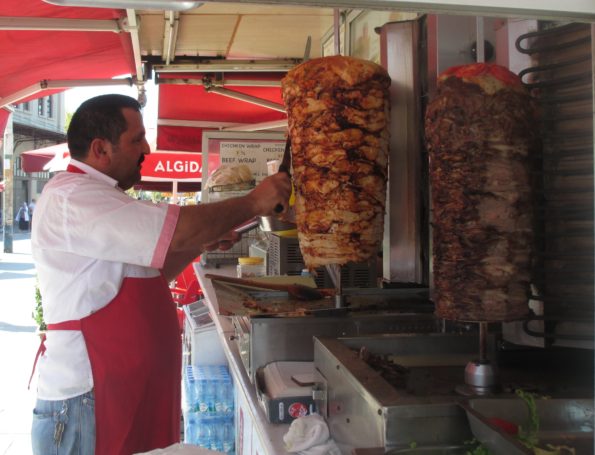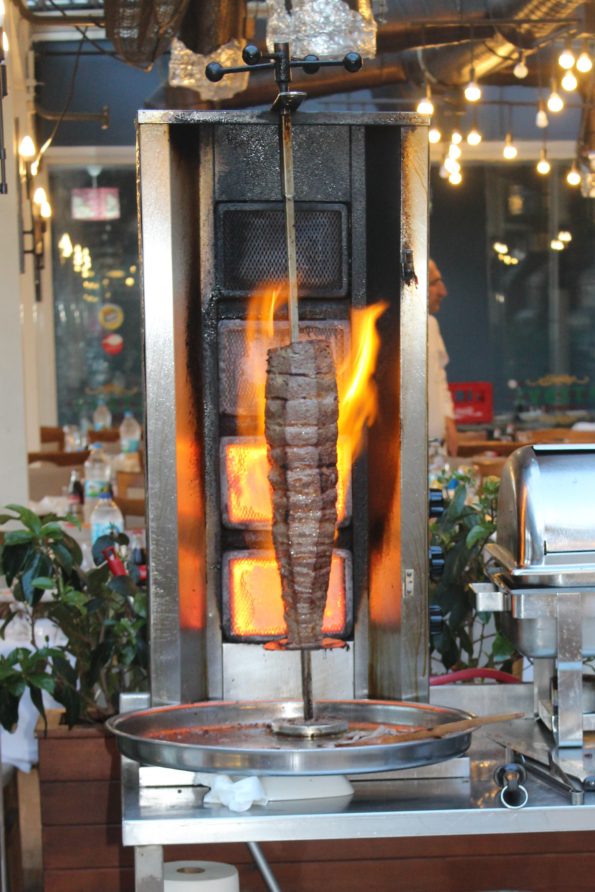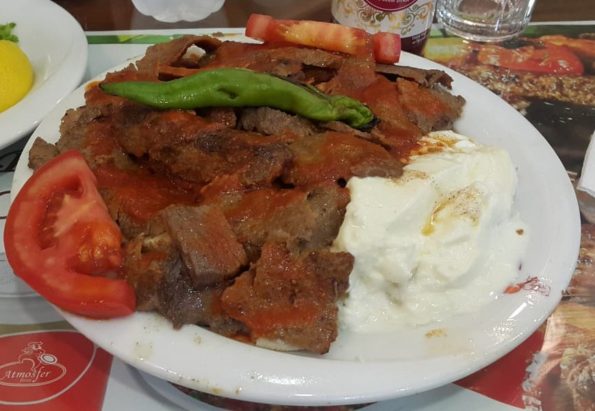Shaved Meat

For anyone who has ever had the pleasure of eating one, just hearing the words “döner kebab” will cause you to start salivating. Turkish cuisine features a seemingly endless list of kebabs, ranging from using minced meat like the Adana kebab to chunks of marinated chicken like the Chicken Shish kebab and everything imaginable in-between. Kebabs are not a new culinary invention but originate in Turkey and date back to the Ottoman Empire. The first mention of “kebab” is in a written article dating from 1377. It’s believed that the idea of kebabs began from Turkish soldiers grilling chunks of freshly hunted meat which they skewered on their swords and cooked over open fires.

Though there are many types of kebabs we could explore for this article, I want to explain about one particular kind of kebab called “döner kebab”: seasoned meat & fat packed on a vertical rotisserie and slowly cooked until the outside layer is crispy but still remains juicy, at which time the outside layer is shaved off and the next layer is slowly cooked. The word döner literally means “rotate” or “turn.” This translation provides practical insight that this type of kebab derived its name from the unique way it is cooked. As meat is cooked over a flame on a traditional horizontal spit the fat drips down into the fire causing the flames to leap up and singe the meat. However, by cooking the meat on a vertical rotisserie the fat doesn’t affect the flames but drips down throughout all of the meat as it slowly cooks thus enhancing the flavor and causing it to remain juicy. Döner kebab is an ancestor of the Greek Gyro and Arab Shawarma which have been popularized in America within the past decade.

This döner meat is used in a variety of kebab dishes. It’s often believed that the meat is lamb, though while that might be true Turks also use beef, veal and chicken. It’s common to enjoy a tasty meal of döner kebab served on a bed of rice pilaf alongside a few pickles and grilled veggies. Döner meat is also used in the delicious dish known as iskender. The first iskender kebab was served in the 1870s in a restaurant called İskender Efendi in Turkey’s fourth largest city of Bursa. This delectable meal is a layer of freshly grilled & buttery pide bread chopped up with a generous portion of crispy, juicy döner meat on top. This is topped with sizzling tomato sauce and dripping with melted butter. A spoonful of plain white yogurt is served on the side which masterfully blends and enhances all the flavors. I must admit this meal is a special treat and one of my favorites in Turkey, though I have yet to eat it from the original place in Bursa… stay tuned as I hope to soon!

While döner kebab has been around for centuries, it was globally popularized after World War II when a mass migration of Turks settled in Germany. In the early 1970s the first fast food döner kebab as we know it today was sold by a Turkish man in West Berlin. In an attempt to provide portable kebabs for workers on the go, he placed sliced döner meat between grilled bread with sauce and veggies instead of on a platter with rice. Today the world’s most popular spitted meat is this quick and easy döner kebab sandwich sold throughout Turkey, the Middle East and Europe especially. It is estimated that Germany alone consumes approximately 600 tons of döner meat every single day! Having lived in Turkey for a number of years I can honestly say that one of the quickest and cheapest meals-on-the-go is döner kebab. Another incredibly delicious variety is the dürüm: a flour tortilla stuffed with döner meat, lettuce, tomatoes, pickles and even french-fries then rolled up into a wrap. Most any little döner kebab stand along the street, on a corner or at a bus station offers to serve you a sandwich-style döner kebab with thick slices of crusty white bread or in a dürüm wrap along with a glass of chilled ayran (salty-yogurt drink). As people rush through their day it’s easy to stop and grab one of these fresh and tasty döner kebabs for a quick and very satisfying meal.


Julene
My mouth is truly salivating now as I read about all these mouth-watering dishes!
Janae
This is definitely something I am looking forward to! I have enjoyed shawarma while in Palestine. Now I will get to try the original!